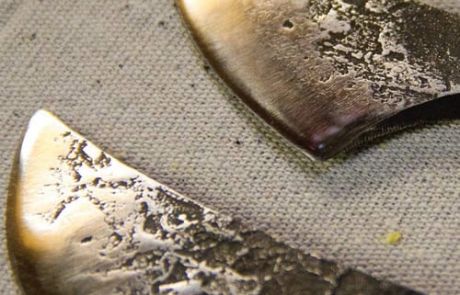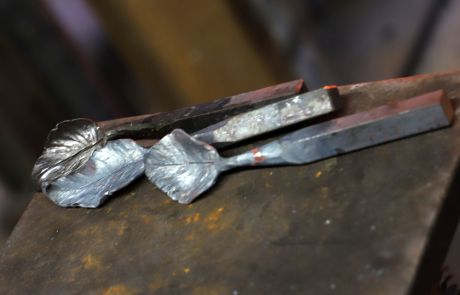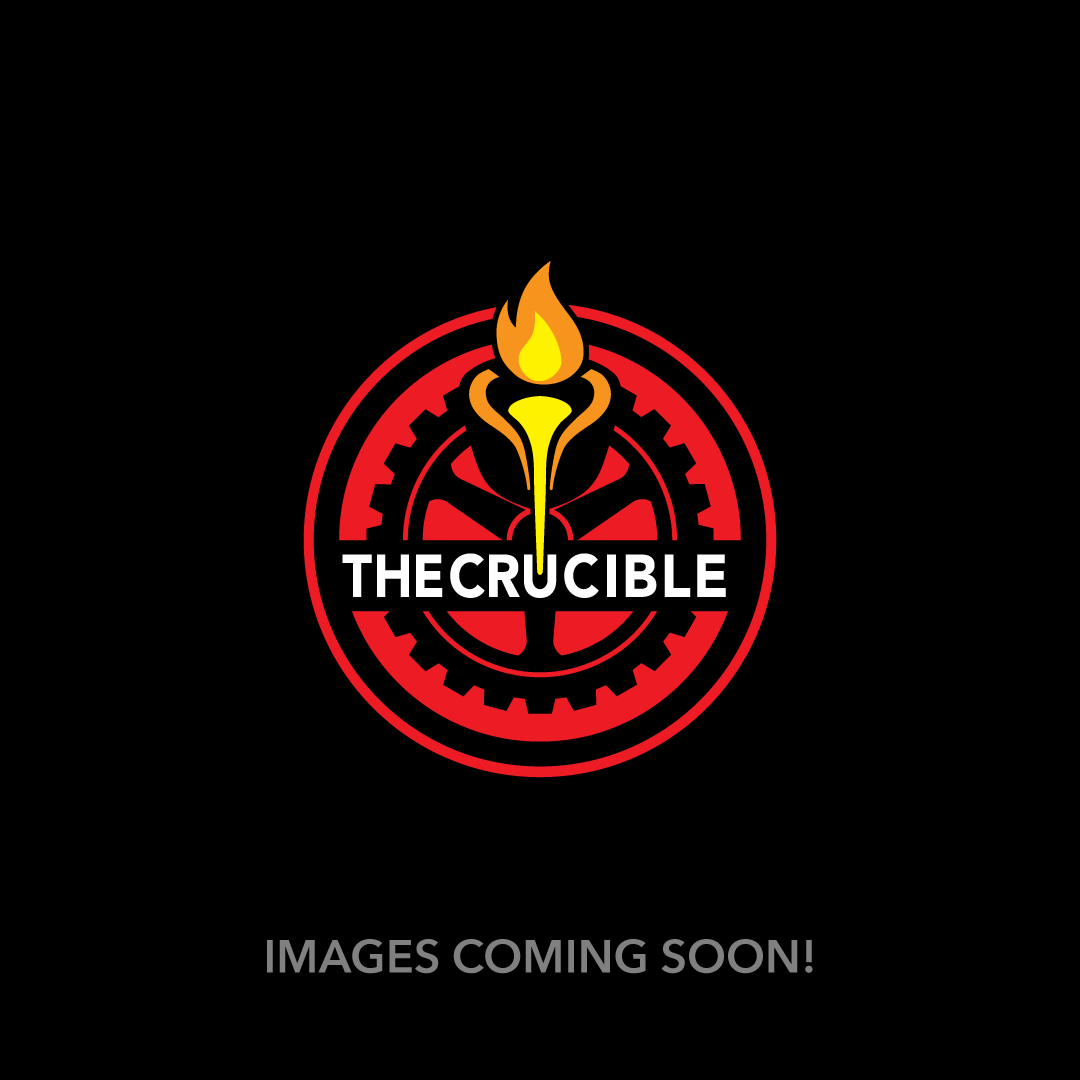BladesmithingMetal
How to Start Bladesmithing: Everything You Need To Know
By Kristin Arzt
What is bladesmithing?
Bladesmithing is the art of making knives, swords, and blades using a forge, hammer, anvil, and smithing tools. The art of bladesmithing is thousands of years old and found in cultures all over the world.
What is a bladesmith?
Bladesmiths use various metalworking techniques to forge blades, woodworking skills for knife and sword handles, and leatherworking knowledge to make sheaths.
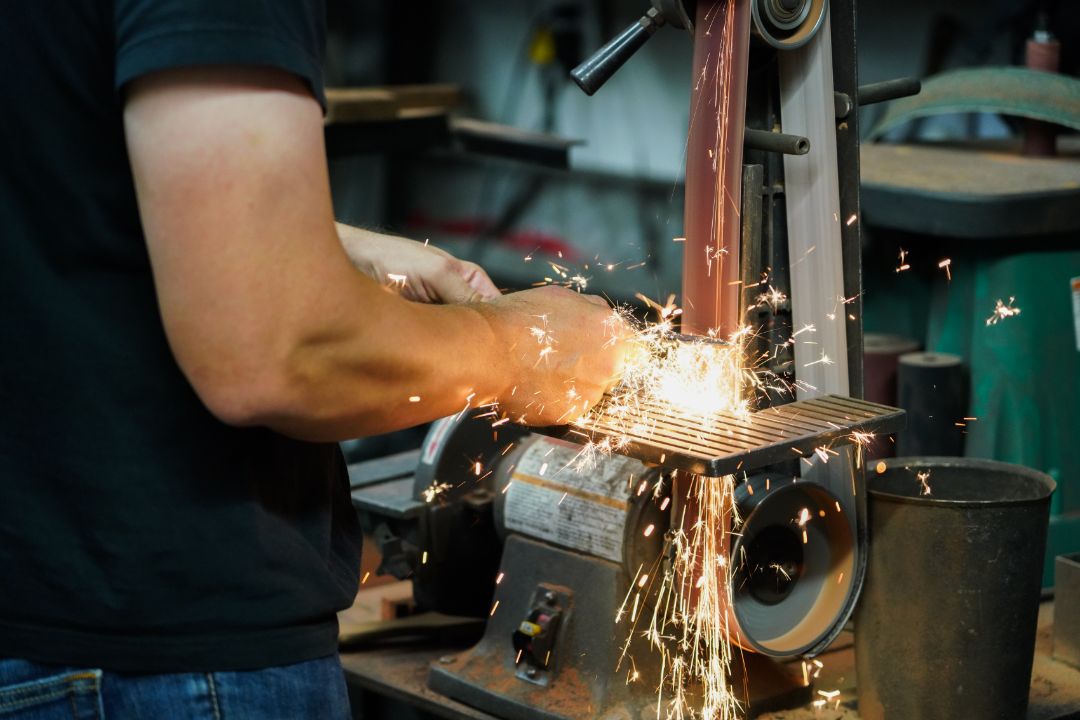
Quick history of bladesmithing
Knife forging dates back millions of years. The oldest known knives were made by humans 2.5 million years ago and consisted of rock, bone, and flint. These materials were brittle, and blades often fractured. So over 6,000 years ago, humans turned to more robust materials, including copper and later iron.
In the Roman Empire, iron was the most common metal for bladesmiths because of its strength and wide availability. Today, modern bladesmiths use steel, forging it themselves or working with a pre-made flat bar of steel to create their knife. Traditional bladesmithing declined with improvements in steel production during the Industrial Revolution.
But the art of blacksmithing and bladesmithing, in particular, has enjoyed a resurgence in recent years. Industrial art schools like The Crucible work to increase access to blacksmithing forges and training programs and shows like Forged in Fire bring additional interest and understanding of the art form. Modern equipment, including power hammers, gas forges, and electric grinders, has also changed the way we forge blades.
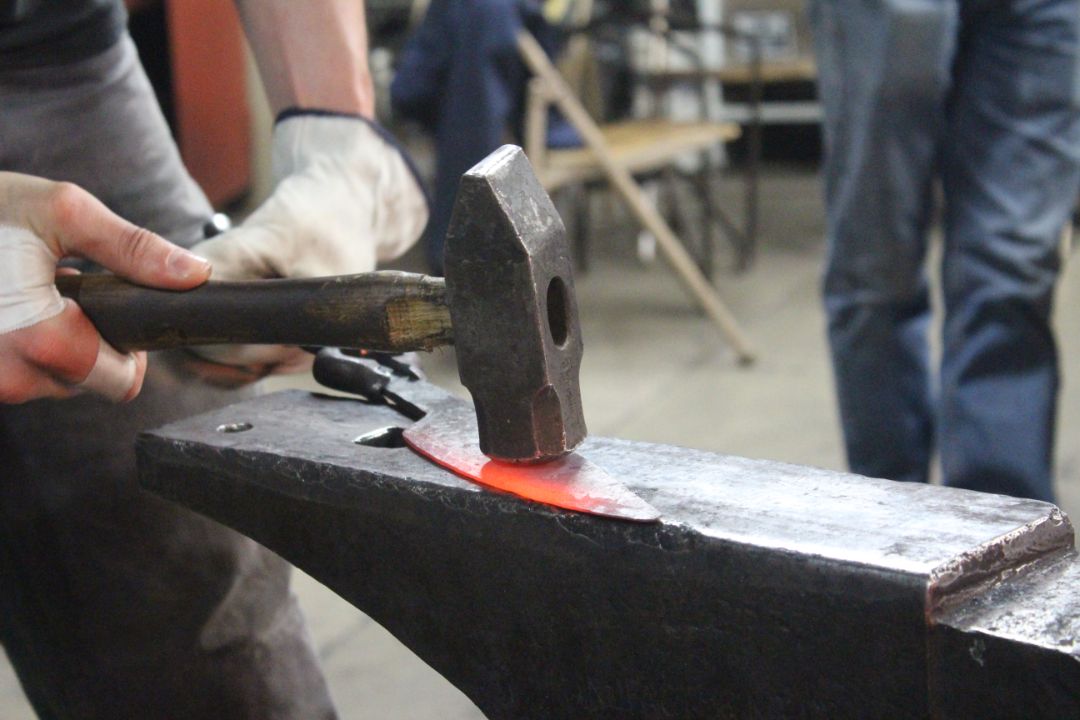
The fundamentals of bladesmithing
Before you get the iron hot, it’s important to consider the fundamentals of forging a solid blade. No matter how far you continue to develop as a bladesmith and blacksmith, your skills in each of the following areas will be absolutely crucial in ensuring you are producing high-quality blades.
Forging
Forging is the act of heat and working metal to produce sharp-edged tools of high carbon steel.
Blade design
Choose the proper blade design for the blade’s intended purpose, including knife blade characteristics, beveling, and tang construction.
Control of steel grain
Educate yourself on the type of alloy you are working with to avoid damaging the steel. Certain kinds of alloys work best at a specific heat to best refine your blade’s grain structure.
Hardening and tempering methods
Heating the blade to a critical temperature and then quenching it in oil forces the steel into its strongest state.
Steel finishes
Polish the blade with emery paper, starting with a large grit, then working your way down to a fine grit until your blade has reached your desired finish. Finally, sharpen the blade with a whetstone.
Handle construction
Bladesmiths often turn to woodworking knowledge for constructing knife and sword handles, from selecting a wood type to peening pins.

Tools needed to start bladesmithing

How to become a bladesmith
There are a few different ways you can get started as a bladesmith.
Get a Degree: If you have the time and the financial means, you might pursue a bachelor’s degree in blacksmithing.
Get an Apprenticeship: Unlike blacksmithing, formal apprenticeships in bladesmithing are rare. Reach out to bladesmiths in your area to see if they have any interest in taking on an apprentice.
Teach Yourself: You can set up a forge in your own garage and try out different techniques on your own. Though we recommend that to really start from nothing, you should be taught by a professional in a class setting.
Take a Class: Expert bladesmiths often teach workshops and classes. The Crucible’s Blacksmithing Department has expert faculty and offers weekend intensives and weeknight classes. This is likely the least expensive and safest option. See below for additional options.
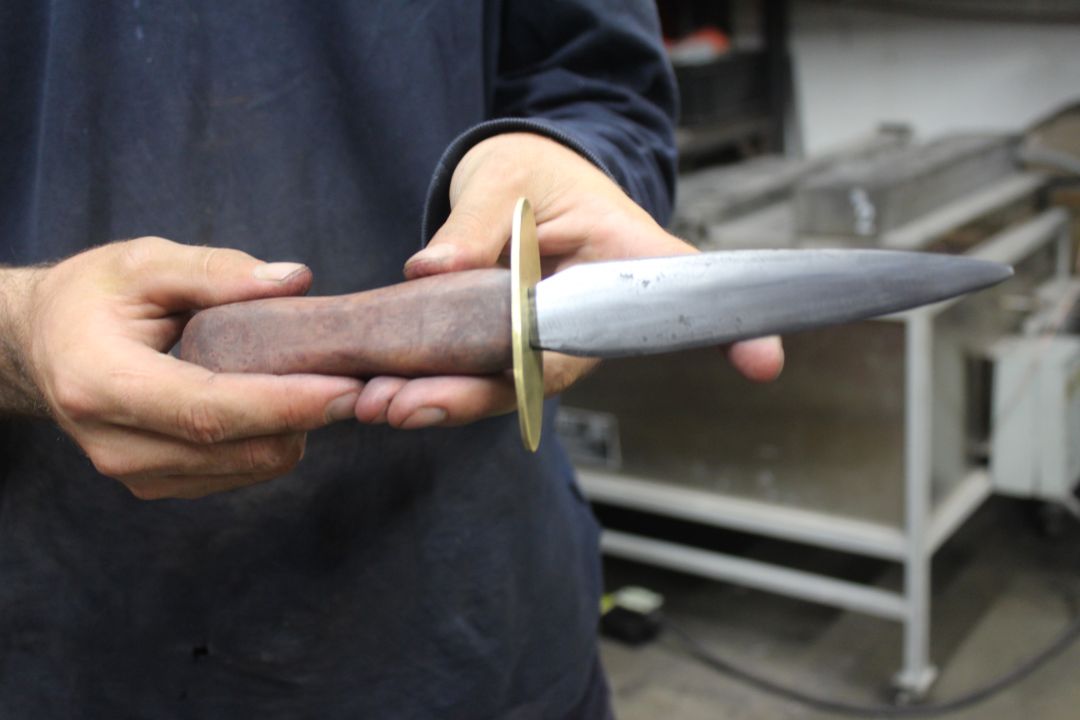
Bladesmithing FAQs
Where can I learn bladesmithing?
The Crucible offers weekend intensives and weeknight classes, with Blacksmithing I and Blacksmithing II as required prerequisites.
California Blacksmith Association (CBA) is a great resource for those interested in blacksmithing. CBA is a nonprofit organization that has been educating smiths and preserving the art and craft of blacksmithing since 1977. They offer online and in-person classes.
You can also check out the American Bladesmith Society, which partners with schools all over the world offering Bladesmithing classes. These run from casual classes at around $1,900, to months of education at around $10,000.
How much does it cost to start bladesmithing?
You can sign up for Blacksmithing I, Blacksmithing II, and Bladesmithing at The Crucible for under $1,600.
American Blacksmith Society partners with schools to offer classes, with prices ranging from $1,900 to $10,000.
If you are committed, have space, and are already experienced in the fundamentals, you can set up your own blacksmith shop for about $500.
What is an ABS master bladesmith?
The American Bladesmith Society, or ABS, is an organization of knifemakers whose mission is to promote the techniques of forging steel blades. Bladesmiths apply to become master bladesmiths through ABS. ABS bladesmiths forge their blades, as opposed to making them in the stock-removal method.
How long does it take to become a master bladesmith?
It takes at least three years to become a master bladesmith. After you have taken a few blacksmithing and bladesmithing classes, you can apply to become a master bladesmith through the American Bladesmithing Society. According to the ABS, you must have been an ABS Journeyman Smith for one full year, and go on to become an ABS Journeyman Smith for two full years.














